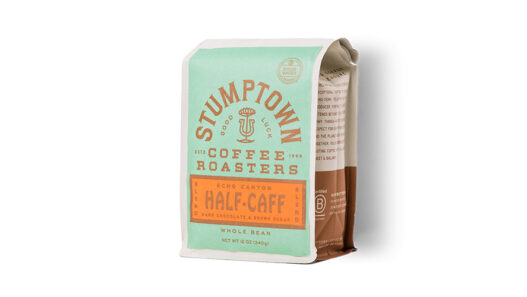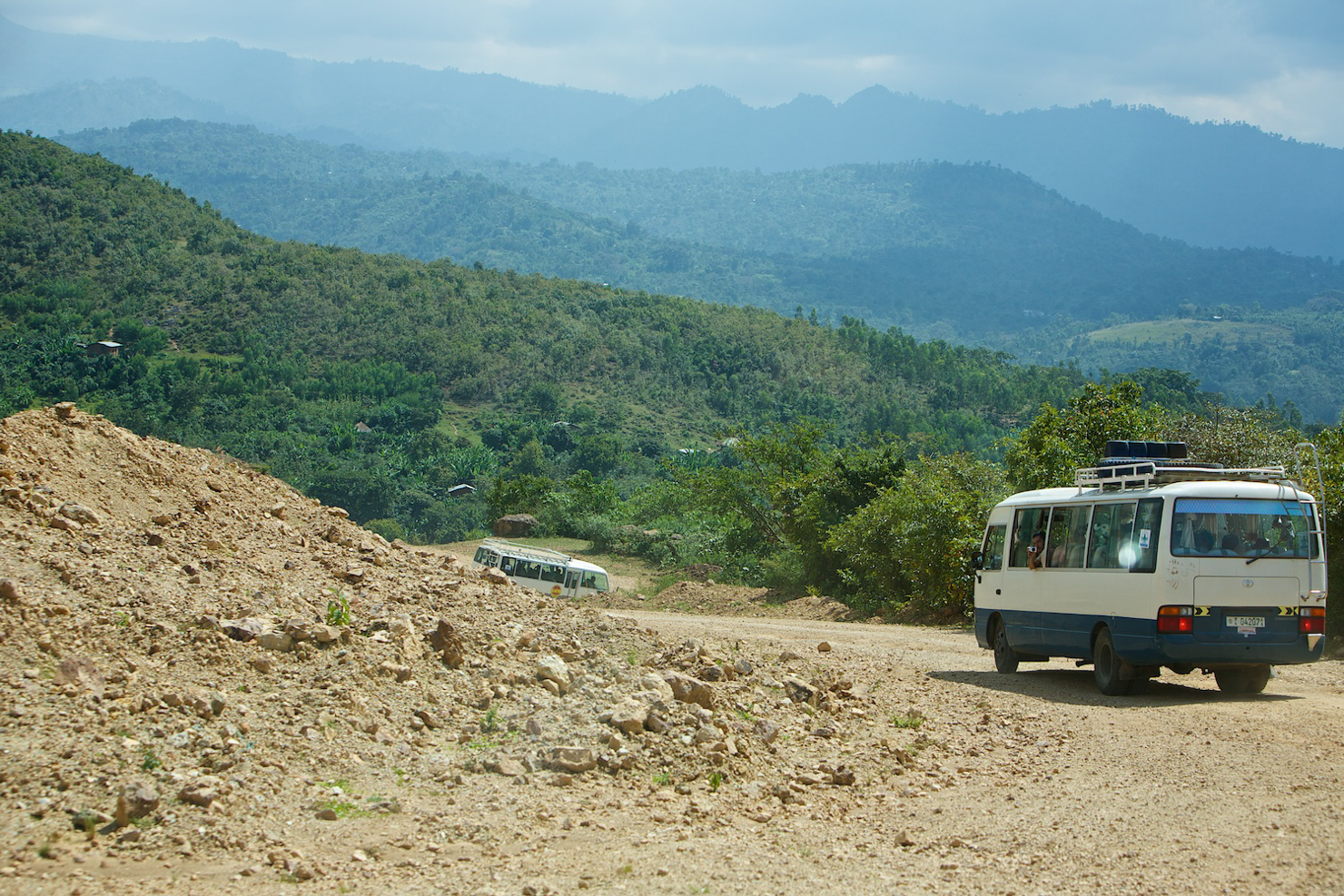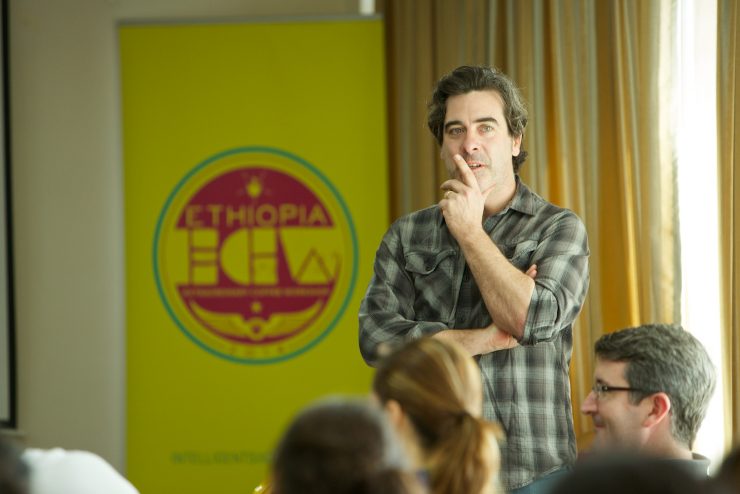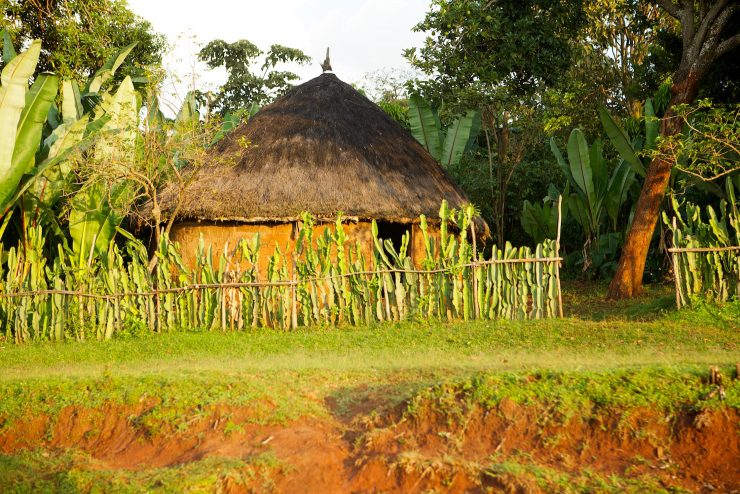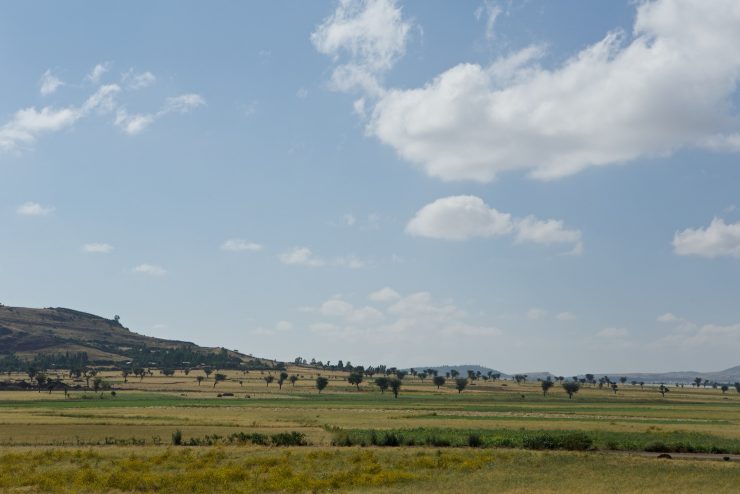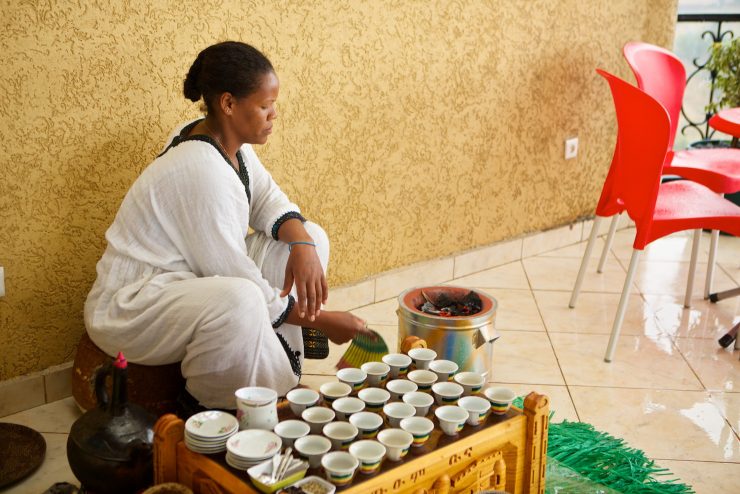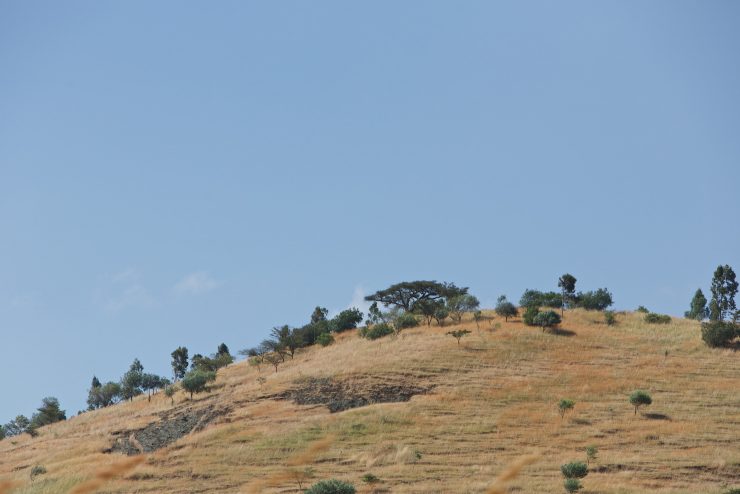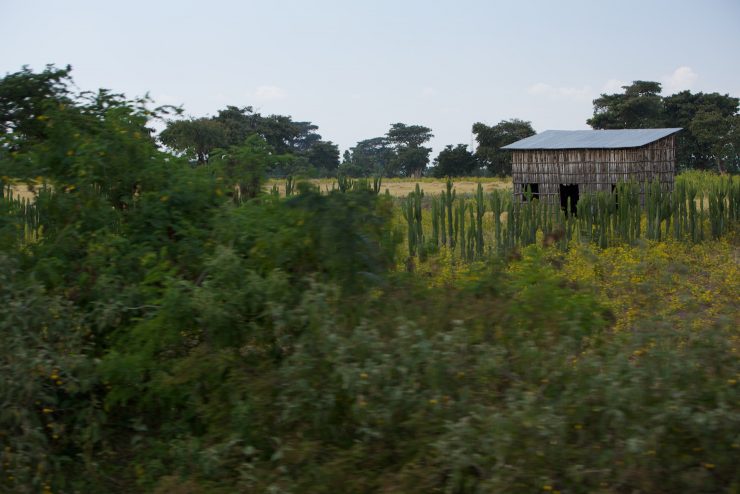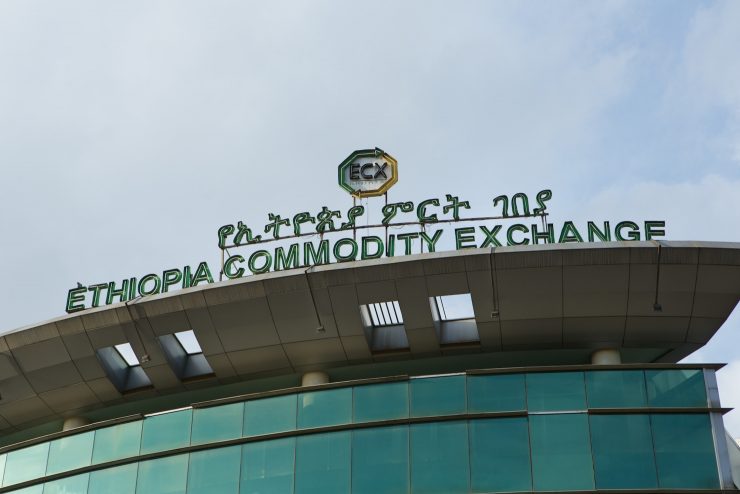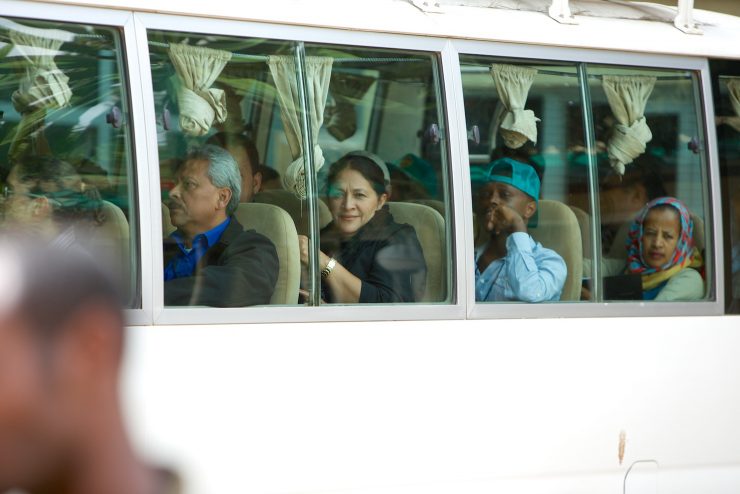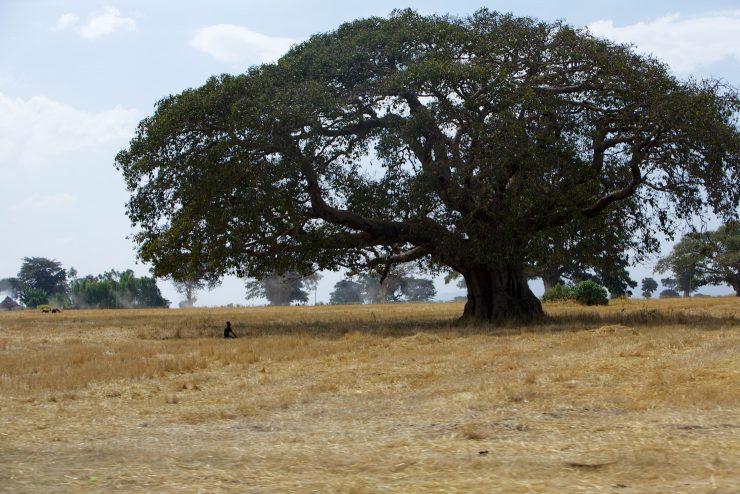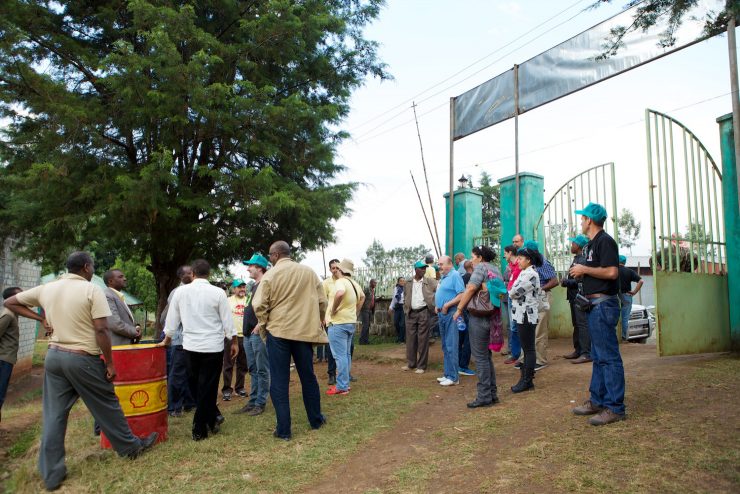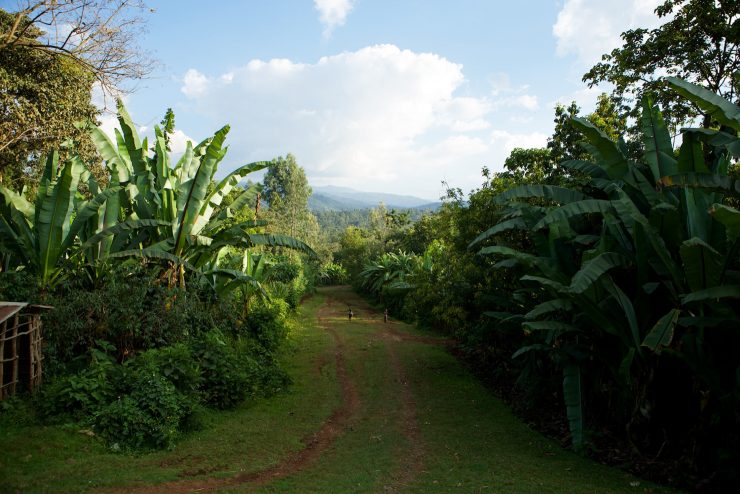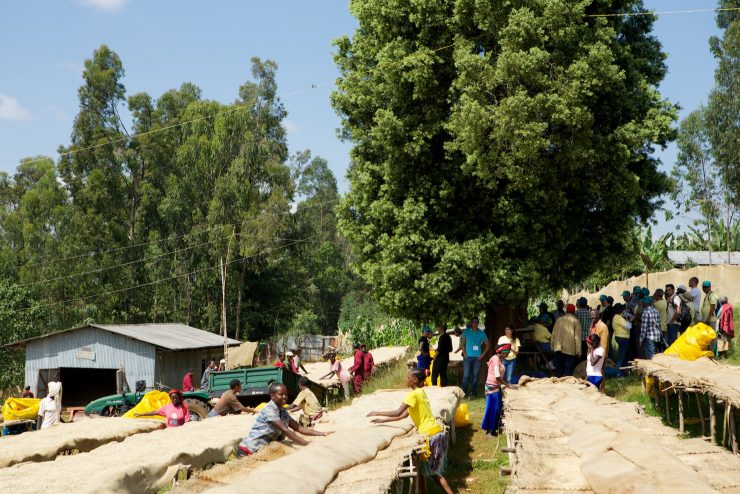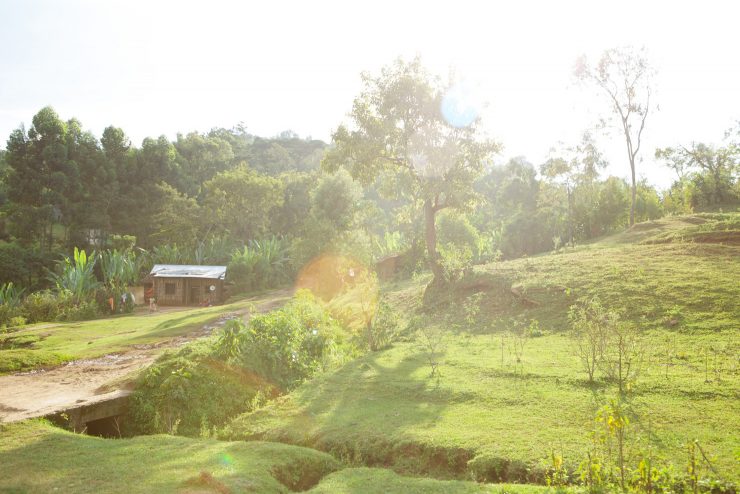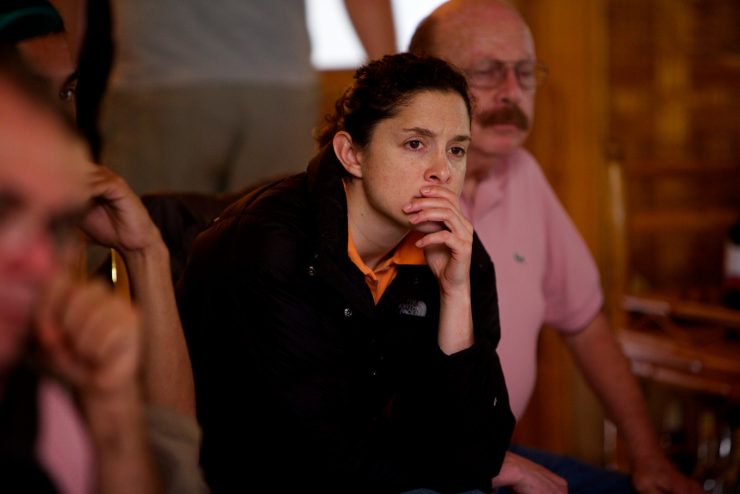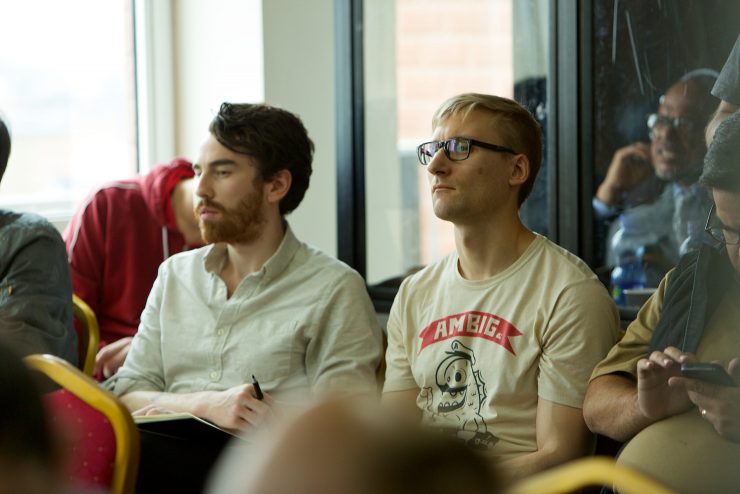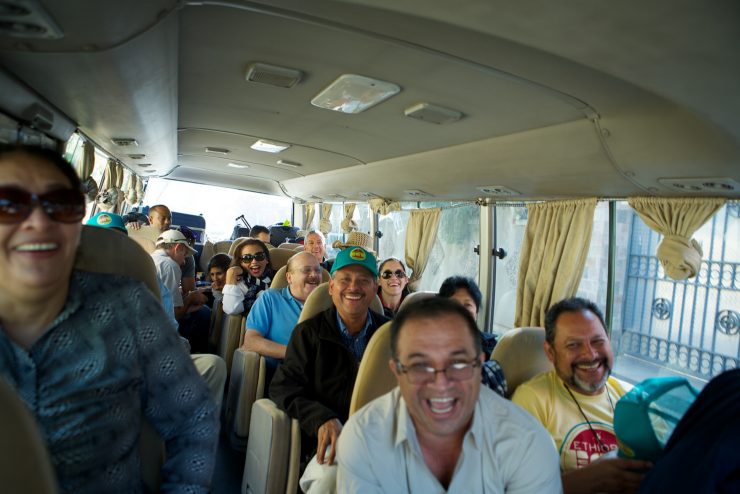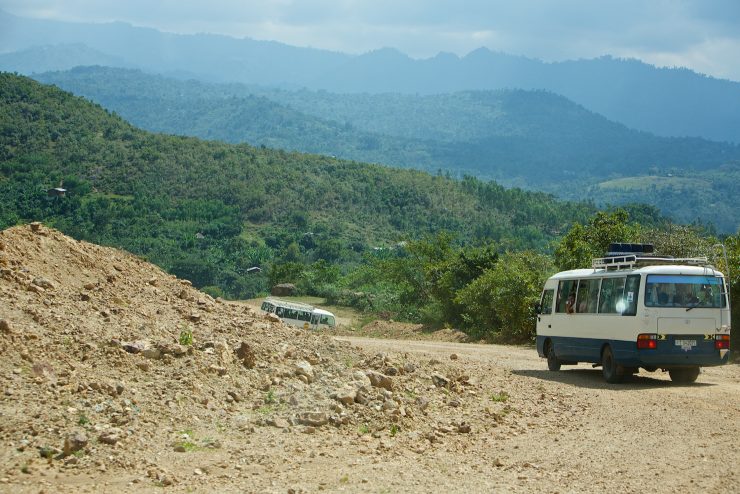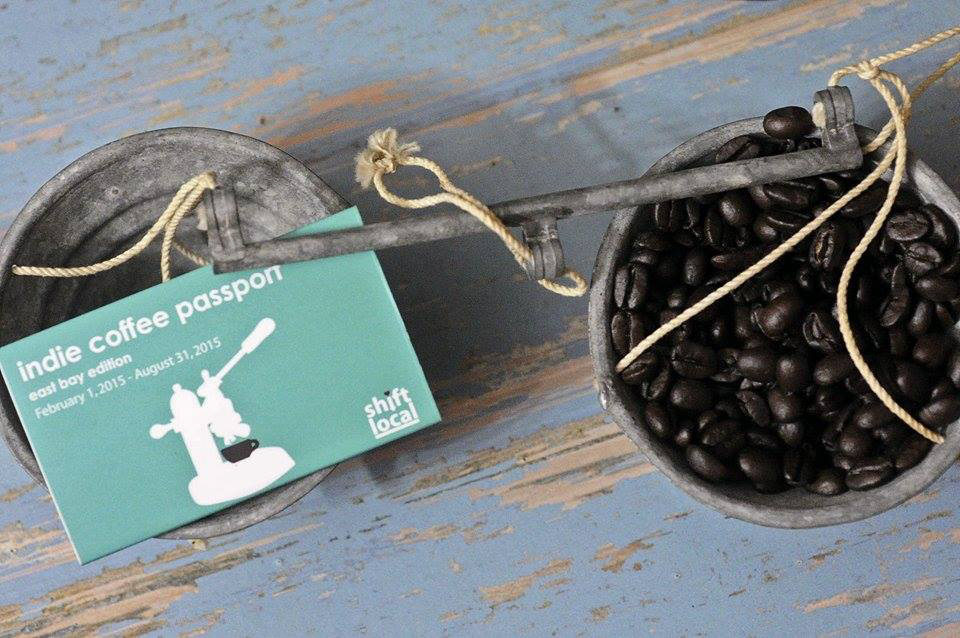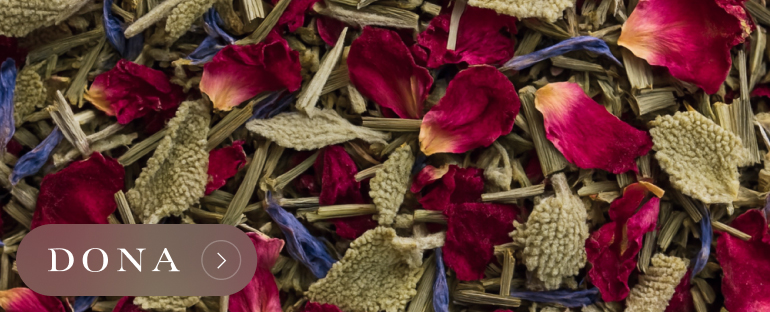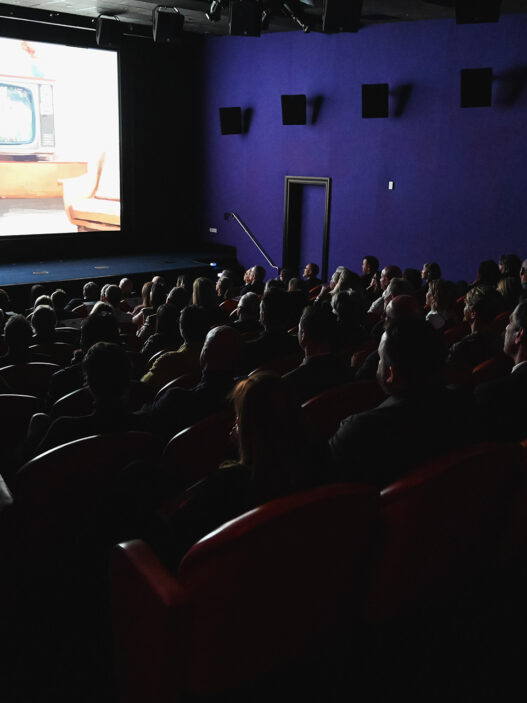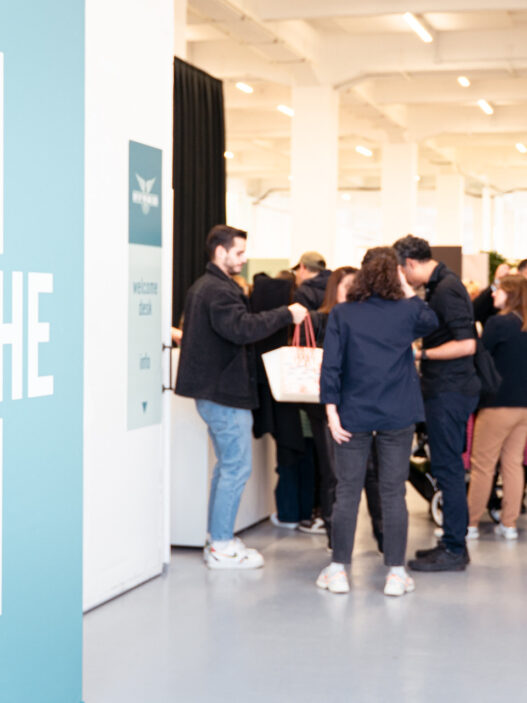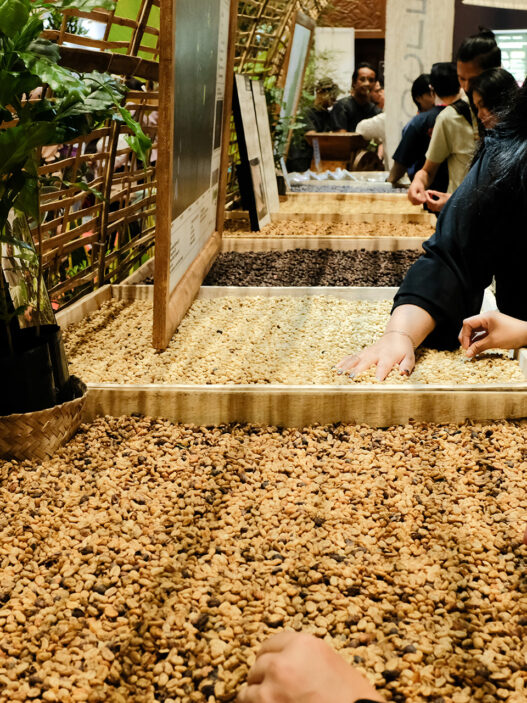This is the story of how our friends & partners at Intelligentsia Coffee brought dozens of the world’s best coffee producers to Ethiopia, the birthplace of coffee.
Back in October 2011, we were invited along with a few other journalists and observers to take part in Intelligentsia Coffee’s Extraordinary Coffee Workshop in Los Angeles. The ECW is Intelligentsia’s annual, closed-door, origin conference; part hardcore policy session, part farmer summer camp, these events are as exclusive and cloistered as they are fascinating, and comprise an international who’s who of top coffee producers. No outside journalists were invited to participate at ECW 2014, which means information is only available directly from Intelligentsia Coffee.
Geoff Watts is one of the coffee industry’s most influential and revered green buyers. Much of how specialty coffee speaks now—microlots, direct trade, the expectation for knowledge of source—can be traced back to Watts and his fellow specialty coffee pioneers in the first decade of the 21st century. Watts documented the 2013 Brazilian edition of ECW on Sprudge, and now he’s back with an inside look at the 2014 Extraordinary Coffee Workshop in Ethiopia, exclusive to Sprudge.com.
Juxtaposition is among the most powerful means of exposing differences and provoking inquiry. Designers and photographers utilize it to make selections from heaps of beautiful options, artists use it to dramatize contrast, and philosophers use it to help clarify ideas. As coffee tasters, we rely on it to help us sort through an avalanche of sensory information we experience when cupping coffees and making decisions in the quality control lab.
In 2013 we held the Extraordinary Coffee Workshop in Brazil, a coffee producing nation that is home to some of the world’s largest farms and most sophisticated coffee technology, with remote-controlled mechanical harvesters, overhead pivot irrigation, and electronic cherry sorters. In 2014, it felt right to juxtapose that experience by seeing coffee growing in its native environment, in gardens measured not in hectares but by the number of trees. The growers concurred. When polled at the end of last year’s event about where to go next, their responses were quick and unanimous. This train was bound for Africa, and more specifically, Ethiopia.
For coffee professionals there is no place on earth more enthralling than Ethiopia. It is the birthplace of coffee, the origin of the species, and a Mecca of sorts for those whose love for coffee borders on worship. Many countries can rightfully claim to possess a profound and historically important coffee culture—Italy, Austria, Germany, and the US all have much to be proud of for their contributions to the canon (and plenty to be ashamed about, but that’s for another article). In recent decades many Scandinavian countries, along with Japan and Australia, have made huge imprints on the global coffee scene, and in the coming decades, countries that are just discovering quality coffee now will surely deliver some exciting innovations. Still, even taken all together, our collective global coffee culture can seem almost frivolous or trivial when viewed alongside the longue durée of Ethiopian coffee traditions.
Here coffee is intertwined in the fabric of life to such a degree as to be inseparable. Wherever one goes there is coffee being served, day and night. Most people roast their own—there are more home roasters in Ethiopia than in the rest of the world combined—and brew it by hand. Coffee has its own ritual and ceremony, and serves an important function as the nucleus for social gatherings. Ethiopia is the only place where one can still see wild coffee growing spontaneously in the forest, and, unlike all other countries, where production is limited to a handful of coffee types, it has many thousands of genetically distinct heirloom varieties. Coffee trees can be found growing everywhere, even in cities, often as ornamental plants. This is the place where both humankind and Coffea arabica first appeared on the earth, and to this day live together in a way that is completely unlike anywhere else.
Getting 30 farmers from 14 countries to Ethiopia is not easy. A dozen calls with travel agents, six trips to the Ethiopian Embassy in Los Angeles, eight trips to DHL, and at least fifty new gray hairs were required to secure all of the necessary entry visas and coordinate the flights. For the majority of the producers invited to the ECW in Ethiopia, this was their first-ever visit to Africa. Passports were flown back and forth across continents, racking up more travel miles in a couple weeks than the average American does in a lifetime. Concerns about Ebola threatened to interfere for a minute, but were extinguished using the very rational argument that there is a greater chance of getting eaten by a lion than catching Ebola in Ethiopia.
Two months of work went into getting the whole trip planned, and with way more than a little help from our friends in Ethiopia we got all of the logistics hammered out and were prepared for what would be the most unforgettable ECW trip to date.
Day One
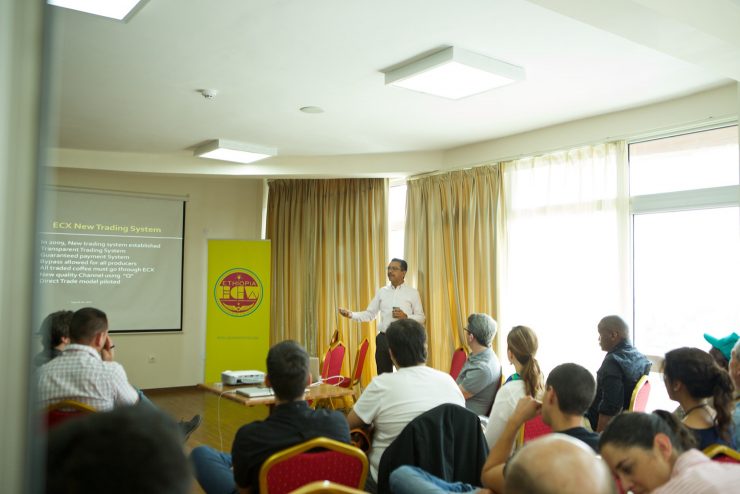
Best way to start something is to dive in deep. We opened the event with a fascinating narrative tour through Ethiopia’s coffee landscape, led by the incomparable Abdullah Bagersh, whose family has been operating at the center of the Ethiopian coffee industry for several generations. Beginning during the time of Emperor Haile Selassie’s reign and moving through the communist Derg era, Abdullah Bagersh then took us from the fall of the Derg regime to the rise of differentiated coffees and the eventual establishment of the Ethiopia Commodity Exchange (ECX). We absorbed over 60 years worth of Abyssinian coffee history in about an hour and a half.
Full of newfound knowledge and equipped with some context, we headed to our friend Aman Adinew’s place called Metad—the first SCAA-certified cupping lab in Africa—to taste coffee and take an altogether different kind of tour through Ethiopia. We tried both washed and traditional sundried coffees, some floral and some fruity, and all of them very recently harvested. There were samples from Guji and from Gedeb, Hambela, Kaffa and elsewhere, a surfeit of delicious Ethiopian coffees in total.
Once everything had been cupped, the group gathered to discuss, and there was near-complete agreement about the overall winner, a coffee we found to be profoundly aromatic and expressive, eliciting fragrance and flavor descriptors like jasmine, coffee blossom, peach, lemon, and honey. It was voted the most intense, the most complex, and the most elegant of all the coffees on the table, and had some of the classic hallmarks of the best Ethiopian coffees.
The suspense built as we started revealing the names. Was our champion from the celebrated Yirgacheffe or Sidama regions? Could it be an upstart from Guji or perhaps a wild forest coffee from Kaffa?
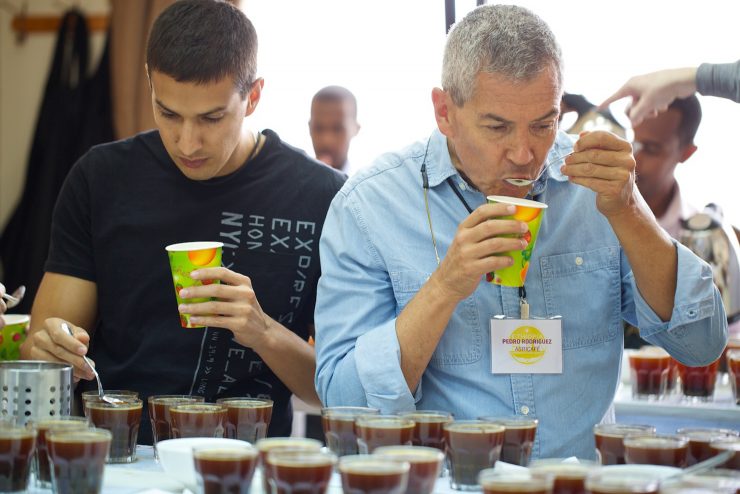
Imagine the surprise when it turned out this coffee was not produced in Ethiopia at all, but had traveled all the way from Bolivia. Our group findings on the cupping table were a harbinger of sorts, a message to support what would be the central premise of our public symposium at the end of the event: that despite all of Ethiopia’s natural advantages, it is getting outperformed at the top end of specialty coffee when it should be running laps around the competition. More on this later.
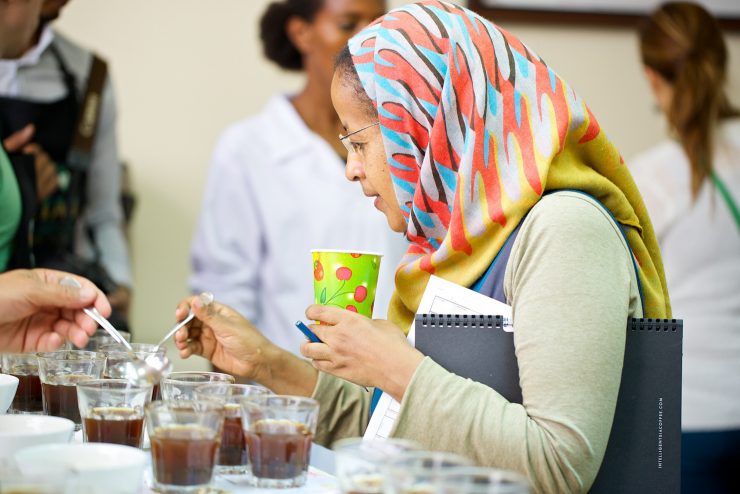
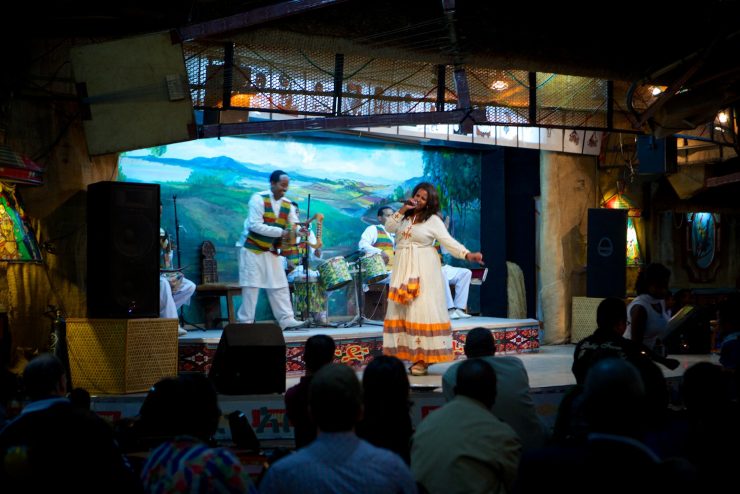
After cupping we moved across town to tour the Ethiopia Commodity Exchange and learn about its functionality. Modeled after the Chicago Mercantile Exchange, the ECX trades physical coffee (along with other crops like sesame, maize, and wheat) daily in an open outcry system. It is the first such exchange in Africa, and will surely be studied intensely by other countries to see what sort of impact it has over time. The inclusion of coffee in the system has been highly controversial since its inception in 2008, and while there is no doubt that there have been real and significant benefits to the local industry as a result of the infrastructure improvements and regulations that were necessary to make the exchange functional, there have also been some notable losses. In particular, the high-end specialty sector has been eroded by the removal of incentive for local washing stations to invest in higher quality, and farm-gate traceability for a huge chunk of the country’s exports has been lost entirely.
Underlying the whole debate about the value of the ECX as applies to coffee is a simple question: can the treatment of Ethiopian coffee as a commodity deliver optimal reward to the millions of small-scale coffee growers? Whether this grand experiment will be deemed a success or a failure won’t be possible to determine for another five to ten years, but the judgment will surely depend on the answer to that fundamental question. Certainly there is a strong argument to be made that Ethiopia, given its massive diversity of coffee types and near-ideal growing conditions for producing quality, would find greater benefit by strengthening its systems for preserving unique, highly differentiated coffees and promoting investment in quality improvement to best exploit their natural advantages.
With the new price transparency that the ECX has fostered there is now an opportunity to further evolve. If it can use its impressive reach and systematic approach to help further empower growers in remote regions, and catalyze a renewed focus on top-shelf quality, it would surely lead to some amazing advances.
Traditional Ethiopian dance is mesmerizing. It is at once playful, acrobatic, and sensual. The rhythms drive forward with purpose but maintain a relaxed, nuanced feel that gives the music levity, and the dancers can do things with their heads and shoulders that make Michael Jackson (RIP) and Shakira look like amateurs. A lot of “folkloric” music and dance I’ve seen in Latin America is pretty, and vaguely interesting, but only fun for a few minutes. Ethiopian music has a style and a sound that is deeply compelling even in large doses, and is one of the most underappreciated performing arts in the world. Throw in an enormous feast of spicy traditional food and a few bottles of locally made tej (honey wine, the Ethiopian equivalent of mead) and you’ve got yourself a party.
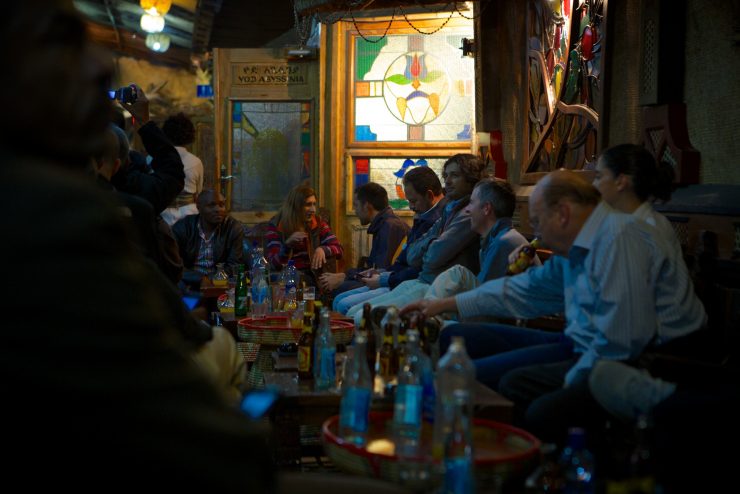
Day Two
Heading south to the Sidama growing region, we spent the next eight hours driving through golden fields of teff, past camels and donkeys and people who reluctantly share the road with cars. It took some time; the road was devastated due to a very, very delayed building project. It’s beyond great that the Ethiopian government finally got around to improving the region’s single most important thoroughfare—the only viable road linking the huge growing region of the south with Addis—but the method left something to be desired. Most of the route from Hawassa to Yirgacheffe was entirely ripped up and left unfinished. The explanation given was that the road-building project had been contracted in sections to several different countries—China, Egypt, Pakistan, and others—and that all but the Chinese portion had started and then stalled due to contract disputes. Whatever the reason, the condition of the roads meant bumpy, dusty and slowwwww transit.
Fortunately no one really cared—being together again in a foreign land was enough to keep most everyone engaged in conversation, and the landscape itself is so fascinating that just staring out the window can keep one content for hours. Our group includes some of the most accomplished and innovative coffee farmers in their respective countries, and the collective wisdom and innate curiosity they bring with them to these events leads to some incredible dialogue about the ways and means of making better coffee. To that end, a couple dozen cumulative hours of hanging on the bus has a lot of upside.
After an unplanned stop at a strawberry patch and a short break for lunch in Hawassa, we arrived to Fero Cooperative just as the sun was beginning its descent. As we came off the buses we were greeted by the cooperative’s entire management team, the scene was unusual—a flood of farmers from Latin America fanning out across the station, most of them bee-lining toward one of the many dozens of drying beds to get their first look at the coffee. Traveling with farmers gives us a chance to see different production systems through their eyes, to get a different perspective that can only come from spending decades working on a coffee farm. Other farmers see things that buyers can miss, and ask questions that I’d never think to ask. We spent about an hour hanging out at Fero before driving up the road to the Aregash Lodge, the gorgeous hotel that would serve as our base camp for the next two days.
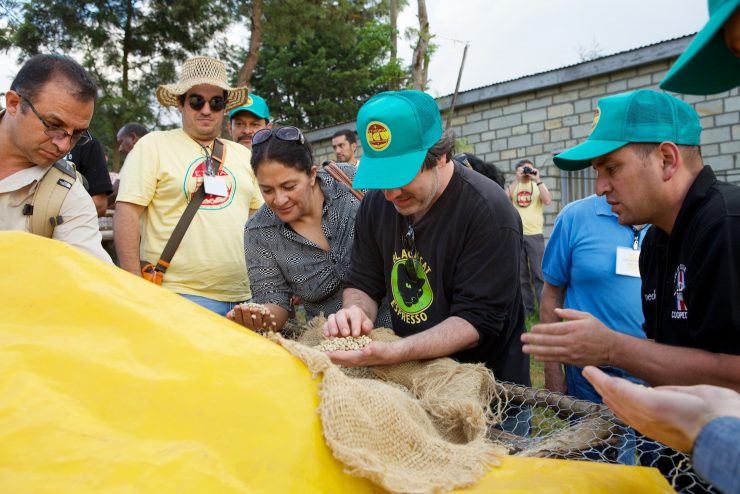
Day Three
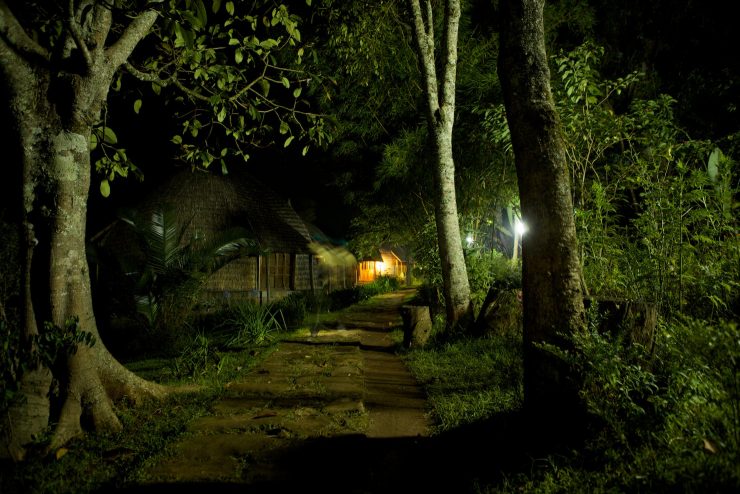
Waking up at the Aregash is a singular experience. The lodge is located just far enough from any road that mechanical noise is almost nonexistent. It is quiet and deeply peaceful with one particular exception: the peculiar and slightly maniacal sounds of hyenas howling and giggling that announce the pending start to the day.
Once up, you open the door and step out into a scene that feels downright unreal in its idyllic beauty. A deep green, semi-forested valley stretches across the panorama, dotted with a handful of thatched-roof huts. The soft trickling of the river below provides a backdrop to the sounds of birds chatting with each other, and if you walk out at the right moment you might hear coffee crackling in the pan as it gets roasted over a small fire in front of the dining room. Inside, fresh eggs, fresh coffee—grown just outside the room—and delicious homemade jams await. The worst thing about staying here is that at some point you have to leave.
On the third day we travelled first to Homacho Waeno, a member of the Sidama Coffee Farmers Cooperative Union and one of the standouts among a number of great coffee co-ops in the area. We were already weeks into the harvest season and there was plenty of activity, and for those of us back in America who savor this coffee, establishing a connection to the place it is produced can be deeply satisfying.
For the farmers who’ve long wondered what sort of magic lies behind the uniquely flavorful character of Ethiopian coffees it was an opportunity to look behind the curtain and begin to understand both the notable similarities and the dramatic differences between the conditions here and those in their own countries. Many dots were connected on this visit, and although coffee was what everyone had come to learn about, the most powerful and lasting impression came from the people. There was genuine warmth and easy joy in the smiles that came quickly to the faces of just about everyone we met.
The vibe here is so different than anywhere else coffee grows. Many of the same challenges found in coffee-producing countries around the world—poverty and the lack of access to basic services, increasing pressures that come with growing populations, and other obstacles to comfort and progress—are found here in southern Ethiopia. But the way people respond to them is altogether unlike what you see elsewhere. We can all learn a lot from Ethiopian cultural sensibilities and perspective.
In the afternoon we met up with Takele from the Yirgacheffe Union and visited a small private farm associated with the Harfusa cooperative. Because of population density, production systems, and historical circumstance, the farms in this area tend to be very small and don’t yield enough coffee to sell as individual lots. It is somewhat unusual to find farms in Yirgacheffe that are processing their own coffees, so we were very curious to check it out and grateful to the farmer for taking the time to show us around and tell us a bit about his history. We saw a mix of old-growth wild varieties and more-recently planted, numbered cultivars from the research center. It will be interesting to see how the two perform over time; there is always some skepticism about the introduction of “selected” varieties and their ability to produce the kind of flavor nuance that the older types are known for.
Without doubt the biggest impression left on our group after their first trip through Ethiopia’s enchanted southern coffee region was amazement at the apparent ease with which coffee grows here. A farmer from anywhere else cannot help but be a little jealous; it takes incredible effort to get coffee to thrive in places like Costa Rica, Bolivia, Brazil, Guatemala, and Zambia, but here coffee does quite well when left to its own devices with little to no input, pruning, or controls.
Farmers in Latin America go to tremendous lengths (and spend a lot of resources) to keep their trees healthy and producing quality, but in Ethiopia it seems to just happen with minimal assistance. There is a reason these coffees—even those that are relatively uncared for—can effortlessly outperform some of the best managed, meticulously produced coffees from other countries: to borrow from Beyoncé’s “Flawless”: they woke up like this. Arabica was born here, and this is where it likes to be. The climate and environment are perfectly suited for the production of coffee, and every other place coffee is being grown around the world is at a disadvantage in comparison.
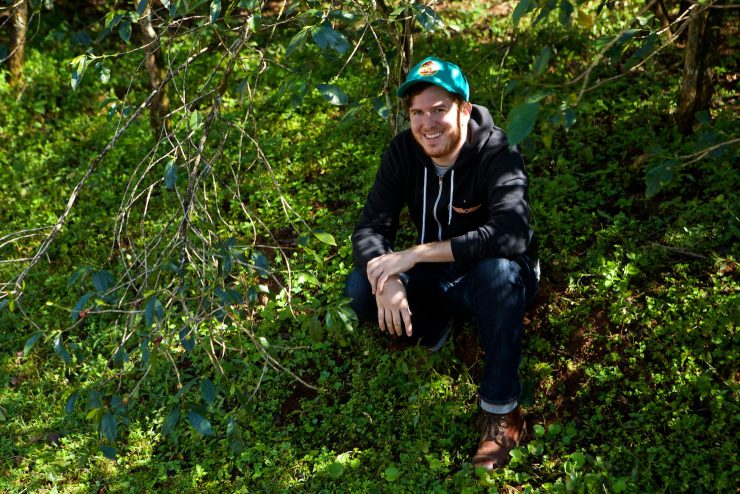
Day Four
New QC protocols, shipping logistics, agronomy, processing techniques, ideas for pilot projects or sales projections: not everything about ECW is sexy or flashy, and we use this time each year to discuss critical realities of the coffee trade with our producer partners. It is a time when we can collectively address both frustrations and aspirations, always with the express purpose of making progress toward a common goal.
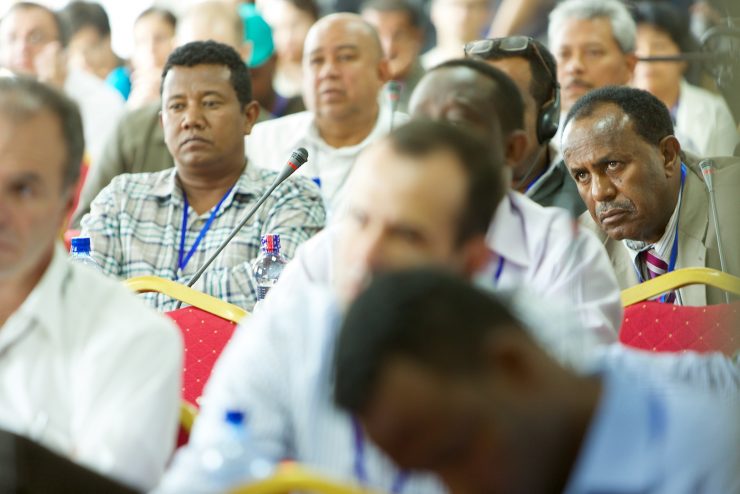
Our final day together featured a first for ECW: a public symposium that was conceived as a way of giving back. Ethiopia provided us all with the gift of coffee, and what a gift it was. The impact coffee has had on the economic development of much of Latin America is enormous, and the countless ways it has influenced our lives are testaments to its value. As a means of demonstrating our gratitude to the country that gave coffee to the world, we felt compelled to turn ECW outward and share the most important lessons we’ve learned over the last couple decades about creating success in the coffee trade with the Ethiopian coffee industry at large.
With some major help from our friends at Technoserve we invited farmers, exporters, union leaders, government representatives, and anyone we thought might have interest in hearing about strategies, ideas, and methods that have led to more profitable and sustainable coffee production in other countries. Attendees from Colombia, Honduras, Brazil, Bolivia, Guatemala, Costa Rica, Rwanda, and Kenya were asked to prepare presentations on things they’ve found invaluable in their individual efforts to progress as coffee growers or exporters.
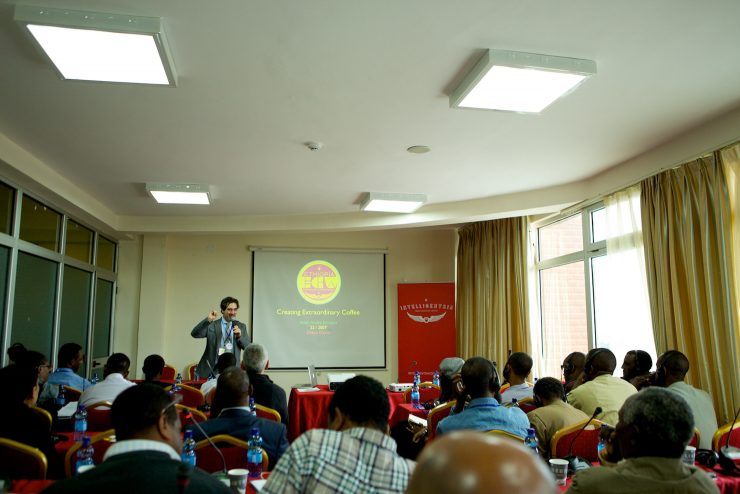
The program kicked off with an introduction to the purpose of the event and an attempt to explain who all of these people sharing advice were and why they might be worth listening to. The narrative I’d envisioned for the day was built around the reality that, although Ethiopia had both the best coffees and the most natural advantages of any coffee-producing country in the world, other countries, like Costa Rica, Guatemala, Panama, and Colombia, were routinely getting more exposure and higher prices for their coffees. The story of the Gesha variety—an Ethiopian heirloom tree with distinctly Ethiopian flavor traits that needed to travel to Panama before it could capture the coffee-world’s attention, achieve record prices, and become the biggest success story in specialty-coffee history—is a powerful example. It cuts to the heart of the issue: if Ethiopian coffee varieties are indeed better than all others and Ethiopia has the best climate on earth for growing coffee, the most profound coffee-consuming culture in the world, and the most exciting history to showcase, then why do farmers in other countries have far more success growing and selling coffees to the specialty market and achieving both recognition and financial reward?
The answers have everything to do with farm management, process control, reliable farmer support, and a willingness to engage with the marketplace to create opportunity and share resources. These just happen to be things that our ECW attendees were exceptionally good at, and it made for an amazingly productive day.
Jesper Lublinkhof from Munali Coffee in Zambia gave the first presentation. The realities of coffee growing in Zambia are shocking: this is a place where water is in such short supply that nearly every drop must be recaptured and recycled, and the trees need to be fed with an elaborate irrigation system. The amount of attention and effort necessary just so that coffee can survive there and bear fruit is huge, and the kinds of things that Lublinkhof and his family were doing to try to get the most out of their coffees are impressive. He outlined their approach to planting shade trees in order to help restore the soil and reduce evaporation.
People were disappointed to hear him say that he chose to downsize his coffee farm in order to make it more economically viable, but the point he made was a critical one: income diversification is a good idea, and using one’s land and energy to grow more than just coffee is a smart thing to do. Coffee harvests only once a year, and it is not wise to rely exclusively on a single crop for income. He also spoke in detail about how his decision to monitor and record more data on the farm has helped him to improve quality, and that a willingness to continuously adapt systems in response to changes in the environment is what has led to more consistently great coffees.
Next, Raul Perez from La Soledad in Guatemala took the mic, and shared that while his family had been growing coffee for many generations, he needed to make some major changes to the farm in order to turn it from a traditional Guatemalan farm to an exquisite model for the region, consistently producing exceptional quality specialty lots and growing in size again after years of consolidation. He credited a willingness to experiment relentlessly and his partnership with loyal, quality-driven buyers [such as Coffee Supreme, Seven Seeds, George Howell, and Intelligentsia] as two of the major catalysts of the farm’s success.
Roberto Mata from Coopedota topped off the early session with an emotional recap of his 20 years as leader of one of the most successful cooperatives in Costa Rica, and shared some of the strategies that have contributed to the co-op’s unity and growth over 50 years of operation. By far the most important of these was a simple principle: Take care of people and most other things will take care of themselves. I’ve seen many co-ops fracture or fail because they’ve not heeded this advice.
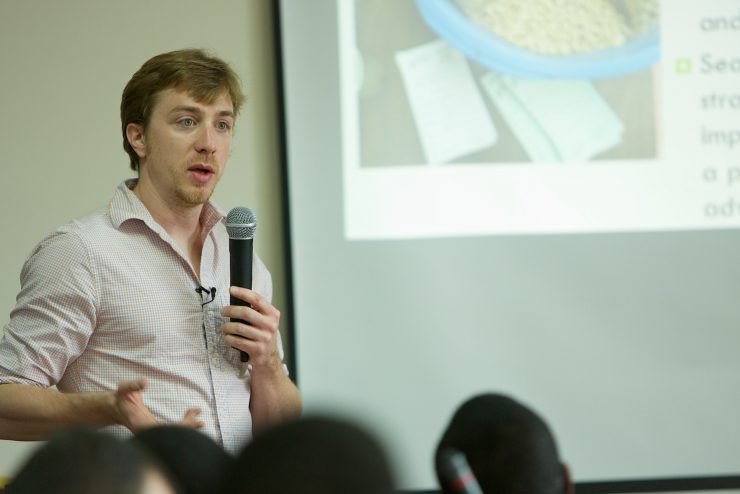
Our second session began with Chris Kornman’s detailed overview of the quality control program at Intelligentsia. He peeled back the curtain to explain what goes on in the lab and how we evaluate samples, make buying decisions, provide feedback, and track quality of individual coffees. For many in the room it was a useful and intelligible explanation of how nuance in coffee can be directly linked to higher value, and what sorts of methods can be used to systematically—and consistently—gauge quality. He was followed by Martin Ngare, an agronomist from Kenya who dropped knowledge about pruning and the impact it can have on tree health and cherry yield. He also gave some compelling examples of how Kenyan systems designed to separate qualities and avoid bulking lead to better returns, and provided evidence that direct sales tend to be more profitable for farmers than the traditional channels. These topics are especially relevant to Ethiopian coffee growers today, in the context of the ECX and the systemic changes it has encouraged.
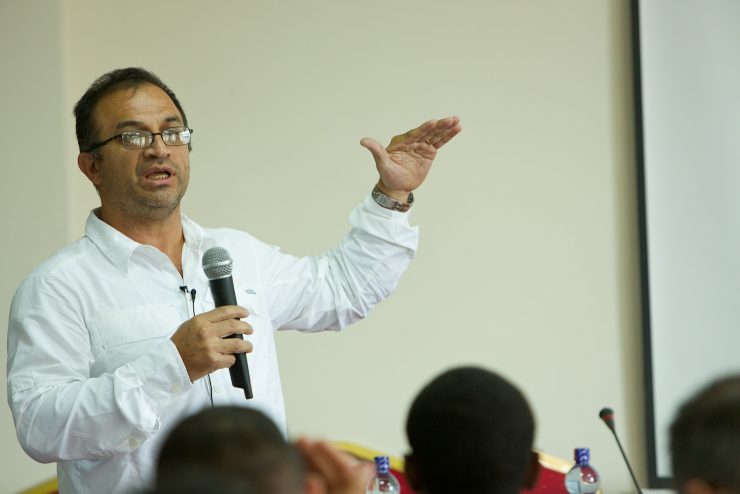
Next up to bat was Moises Herrera from Honduras, who built on this theme by talking about the way he sells coffee and how it has helped him grow and thrive. He is arguably one of the most successful direct-trade farmers in Latin America, and has an enviable portfolio of buyers who sell his coffee in the US, South Korea, and Europe. Through his efforts to develop standout quality and cultivate long-term relationships with roasters in different markets he has achieved a remarkable level of stability that allows him to keep innovating every year.
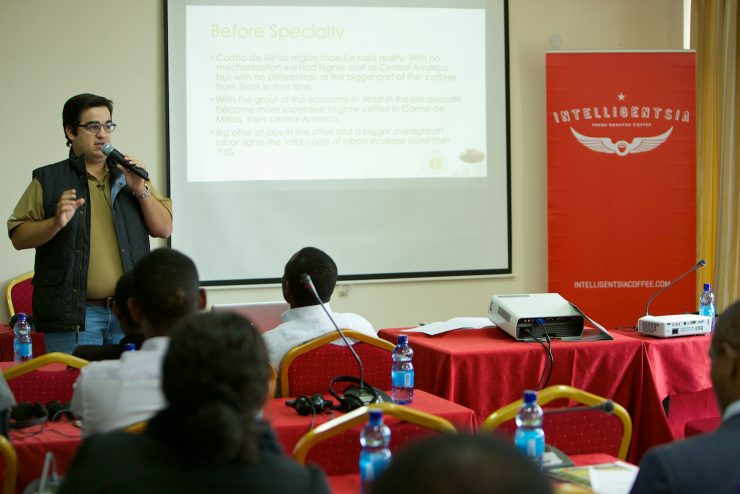
The afternoon sessions opened with a talk from Luiz Paulo of Carmo Coffees, one of the new faces of Brazilian specialty coffee. Carmo has almost single-handedly brought international attention—and major price premiums—to a previously unheralded region of the country. Luis explained how his participation in the Cup of Excellence competitions and the exposure it brought was the catalyst for a complete makeover of the family business, and how subsequent investments he made at the farms added tremendous value to the coffees.
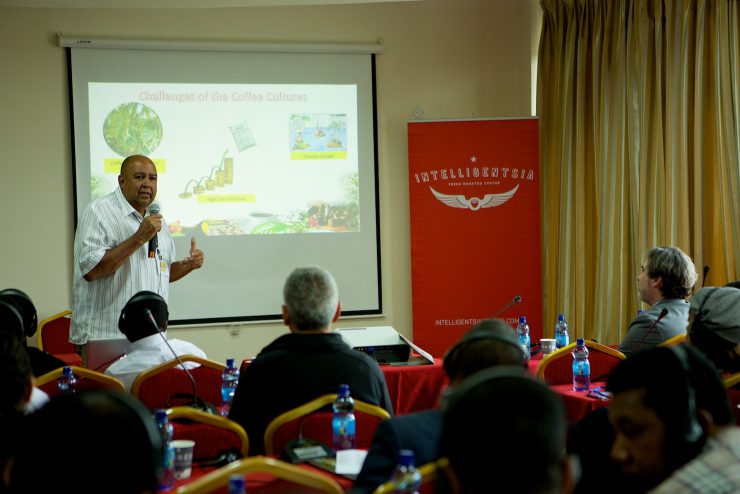
The inimitable Don Fabio Caballero took the stage next and nearly brought the room to tears with a presentation about his personal history and how he brought his farms to where they are today. His compassion and charisma can fill even the biggest of rooms, and it was evident to everyone there how much he cared about their success. He gave his advice generously and it was well-received.
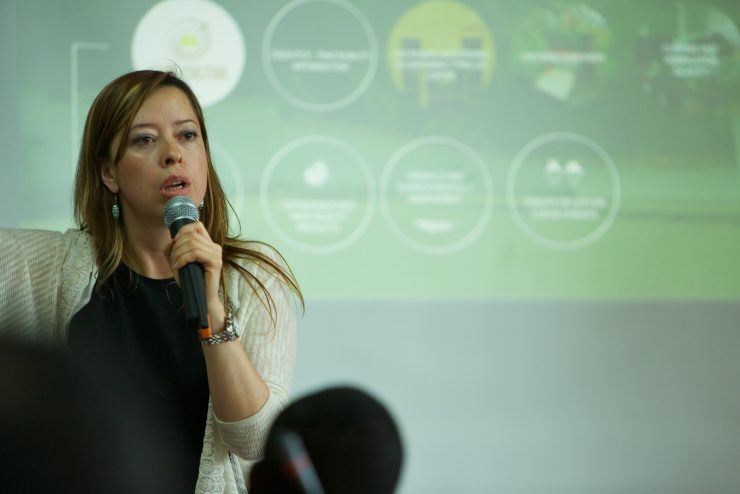
After a short coffee break and a tasting of coffees from Rwanda, Bolivia, and Kenya, we took a trip to the world of small-holder farms in Colombia with Adriana Villanueva, who runs a business that aims to create long-term relationships in the supply chain built around constantly improving coffee. Her model is all about enabling farmers in remote parts of the country to succeed by providing training and resources, and connecting them with the specialty marketplace. It has a clear developmental orientation and a prescribed commitment to pursuing long-term progress over short-term or temporary gain. Some of the projects focus on empowering women, others on teaching the sons and daughters of coffee farmers to become cuppers. All of them are directly relevant to the Ethiopian coffee scene.
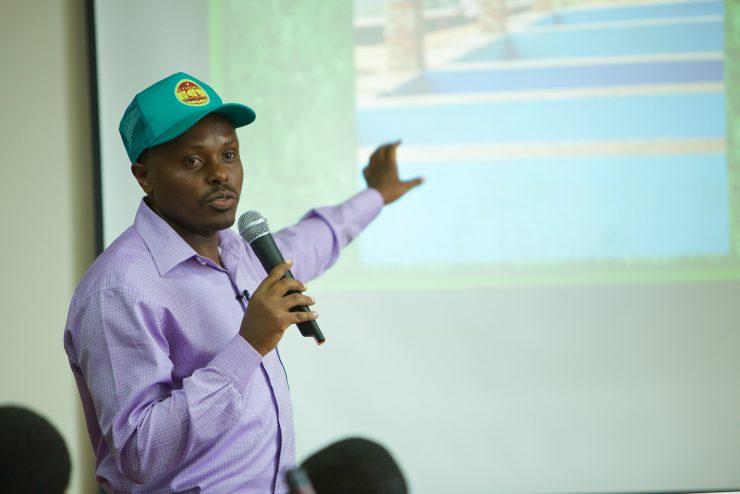
Following her was Samuel Muhirwa from Buf Cafe, one of the young leaders of the Rwandan coffee industry. His family business has been at the forefront of the specialty movement there since it started just over a decade ago. As in Ethiopia, most Rwandan coffee farms are microsized, averaging somewhere between 150–300 trees. Almost all of the coffee is processed at centralized washing stations, much like in Ethiopia, and the competition for cherry is fierce given the limited amount of land available. The Muhirwas’ operation is one of the biggest success stories to come out of the Rwandan coffee sector, and Buf Cafe has been able to grow steadily despite increased competition due to his meticulous approach to managing quality and the loyalty he has earned from the farmers he works with.
Then Pedro Rodriguez spoke, providing an overview of his centralized wet-milling operation in Caranavi, Bolivia, and taking us through an in-depth discussion about the difficulties that coffee production faces in Bolivia along with some of the strategies that he’s using to overcome them. For two countries that are so different from each other, Ethiopia and Bolivia, some of the parallels are surprising: both are places with mostly heirloom varieties that produce great quality but very low yields; neither has its own port; and coffee production in both countries is under increasing pressure from alternative crops used to get people high—coca in one, and khat in the other. Rodriguez’s system has been evolving constantly to adapt to the changing realities of Bolivian coffee production, and his wet mill is among the best designed I’ve seen.
Marty Sweeney of Intelligentsia was up next with a short but thorough look at coffee brewing and coffee service in the US that really helped put everything we’d been discussing in context. All the talk about quality doesn’t make sense without knowledge of how coffee is being presented to consumers, and understanding why small perceived differences in coffee tastes can be a really big deal is far easier when one has a clear picture of how the finished product is handled and sold.
Once everyone had presented, I closed the evening with a talk about sensory evaluation and an examination of how it is employed in the industry to assign value to coffee. We reviewed some common cupping forms and took a hard look at how individual preference, regional or cultural bias, and a host of other variables can lead to inconsistent feedback to farmers. The purpose of the talk was to demystify the coffee evaluation process and open some discussion about practical, reliable ways to look at, talk about, and measure quality that can lead to better decision making at the farms and more tangible, consistent means of determining value.
In the context of the overarching narrative, I wanted to close the event by making a point: Ethiopian coffees have more potential for greatness than any others, by an order of magnitude, yet there are many other countries that are arguably having much more success selling quality. The reasons are many, but among the most important of them have everything to do with understanding the product and marketplace better, and making purposeful decisions about how to apply resources so as to take maximum advantage of the quality potential and ensure the greatest possible returns to individual farmers.
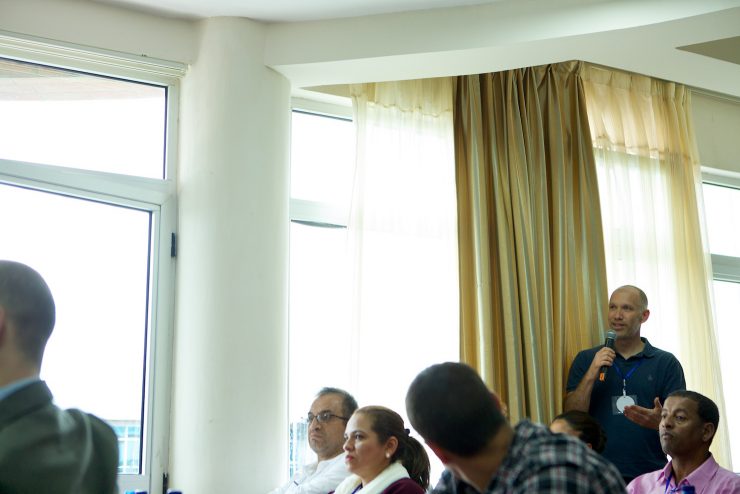
The end of the trip went down much the way the whole thing started—drinking beer and wine together at one of Addis Ababa’s incredible Habesha restaurants, enjoying some killer Ethiopian dance moves, and hanging out. My hope was that the presentations from the day would leave a lasting impression and contribute in some small way to positive change in the local industry. We knew for sure that everyone there had seen and heard some things that would provide creative fuel and plenty of motivation to aim higher. Despite the physical fatigue that comes with five days of nonstop action and long-distance travel, the farmers we brought over from Latin America were charged with new ideas and renewed passion from the trip, and eager to get back home to tackle the upcoming crop.
For my part, I left Ethiopia invigorated as well, which I hope has been conveyed in this missive. A huge thank you to all the participating producers for traveling such long distances, and to our friends on the ground in Ethiopia for their gracious support. Five producing countries down, 15 to go—it will be hard for ECW 2015 to top this trip to Ethiopia, but we’ll surely try.
Photos courtesy of Intelligentsia. Check out more Extraordinary Coffee Workshop coverage on Sprudge.







